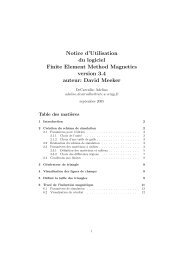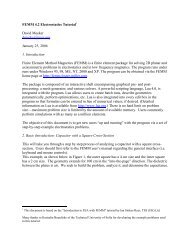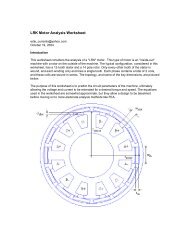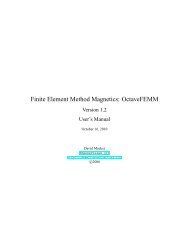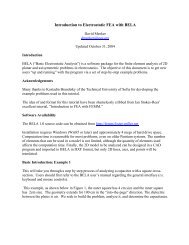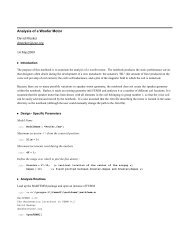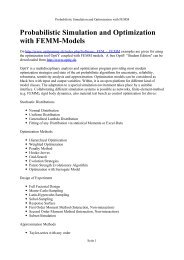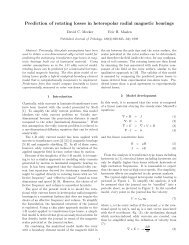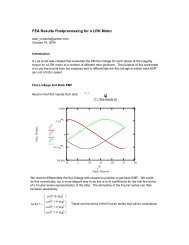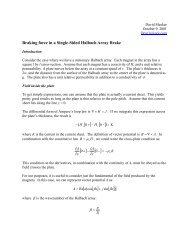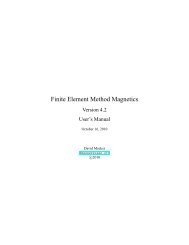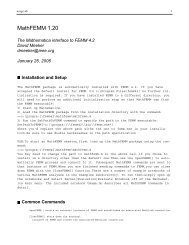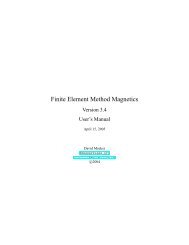Magnetics Tutorial - Finite Element Method Magnetics
Magnetics Tutorial - Finite Element Method Magnetics
Magnetics Tutorial - Finite Element Method Magnetics
You also want an ePaper? Increase the reach of your titles
YUMPU automatically turns print PDFs into web optimized ePapers that Google loves.
Figure 4: Circuit Property results dialog.<br />
Since the problem is linear and there is only one current, the Flux/Current result can be<br />
unambiguously interpreted as the coil's inductance (i.e. 22.9 mH). The resistance of the<br />
coil is the Voltage/Current result (i.e. 3.34 Ω).<br />
3.3 Plotting field values along a contour<br />
FEMM can also plot values of the field along a user-defined contour. Here, we will plot<br />
the flux density along the centerline of the coil. Switch to Contour mode by pressing the<br />
Contour Mode toolbar button. You can now define a contour along which flux will be<br />
plotted. There are three ways to add points to a contour:<br />
1. Left Mouse Button Click adds the nearest input node to the contour;<br />
2. Right Mouse Button Click adds the current mouse pointer position to the contour;<br />
3. Key displays a point entry dialog that allows you to enter in the<br />
coordinates of a point to be added to the contour.<br />
Here, method 1 can be used. Click near the node points at (0,4), (0,0), and (0,-4) with the<br />
left mouse button, adding the points in the above order. Then, press the Plot toolbar<br />
button . Hit OK in the X-Y Plot of Field Values pop-up dialog—the default selection<br />
is magnitude of flux density. If desired, different types of plot can be selected from the<br />
drop list on this dialog.<br />
NOTE: It is often the case in the solution to magnetic problems that the field values are discontinuous<br />
across a boundary. In this case, FEMM determines which side of the boundary will be plotted based on the<br />
order in which points are added. For example, if points are added around a closed contour in a counterclockwise<br />
order, the plotted points will lie just to the inside of the contour. If the points are added in a<br />
clockwise order, the plotted points will lie just to the outside of the contour. The implication to our<br />
example problem is that the contour along the r=0 should be defined in order of decreasing z (i.e. counterclockwise<br />
so that the plotted points will lie inside the solution domain instead of outside it, where the field<br />
values are not defined).



